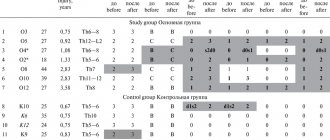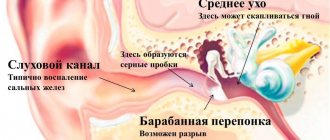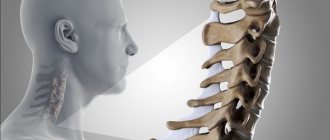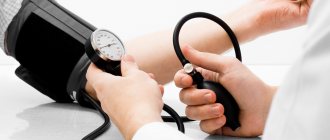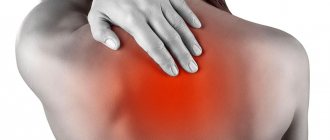Weakness occurs with many diseases, so it is almost impossible for a non-specialist to immediately determine what happened. Weakness in the legs is a very nonspecific symptom that can accompany disturbances in the functioning of many organs and systems. However, such a symptom should never be ignored, since even after heavy physical activity, weakness should go away after a short rest. If weakness in the legs occurs for no apparent reason, much less repeats repeatedly or its severity intensifies, you should consult a doctor immediately.
As mentioned earlier, there are many reasons for weakness in the legs; accordingly, the patient is faced with the question - what specialty should he see a doctor? Most often, such a specialist becomes a neurologist, and a little less often a therapist and an orthopedic traumatologist.
At CELT you can get advice from a neurologist.
- Initial consultation – 3,500
- Repeated consultation – 2,300
Make an appointment
Causes of weakness in the legs
Conventionally, the reasons can be divided into several groups:
- damage to the vascular system;
- muscle damage;
- damage to peripheral nerves;
- diseases of the central nervous system (brain or spinal cord);
- psychological and mental problems;
- joint diseases;
- diseases of the spine;
- intoxication.
During the initial examination and history taking, special attention is paid to the dynamics of the process - whether the weakness arose suddenly or gradually increased, whether it is constant or intermittent, and so on. It is important to find out not only the events that preceded the appearance of weakness in the legs, but also the accompanying symptoms: pain, swelling, convulsive twitching, dizziness, change in skin color, trembling, fever, degree of movement impairment, and the like.
A comparison of clinical and laboratory data allows you to quickly understand which disease of which organ or system caused weakness in the legs. CELT doctors have at their disposal an excellent diagnostic base, with the help of which they can determine not only the disease itself, but also how long it has existed, as well as its severity and prognosis.
Diagnosis for suspected leg neurosis
The Leto mental health center uses the latest diagnostic techniques. Using them, our doctors quickly make correct diagnoses. If the patient complains of twitching and numbness in the leg, he needs to undergo:
- physical examination;
- tests for the integrity of neurological reflexes;
- X-ray of the spinal column;
- ultrasound examination of the pelvic organs;
- electroneuromyography.
The patient is also asked to undergo laboratory tests.
Our doctors
Novikova Larisa Vaganovna
Neuropathologist, Candidate of Medical Sciences, doctor of the highest category
Experience 39 years
Make an appointment
Pankov Alexander Rostislavovich
Neurologist
40 years of experience
Make an appointment
Circulatory disorders
Vascular diseases of the nervous system, which can result in stroke and heart attack, are becoming more common among patients. In this case, situations of so-called transient ischemic attacks are possible, when a “flickering” of symptoms occurs - weakness occurs acutely, but quickly passes. After such an incident, you cannot be complacent and assume that everything turned out okay. It is necessary to identify the cause of the incident as quickly as possible and take appropriate preventive measures.
Stroke and heart attack can occur not only in the brain, but also in the spinal cord. A spinal stroke that occurs at any level can leave a person disabled or require a long and incredibly labor-intensive recovery. It must be said that due to the structure of the spinal cord, recovery after a spinal stroke is rarely successful, even in comparison with a stroke that affects the brain.
Weakness in the limbs may result from myocardial infarction, in which case gastrointestinal symptoms are often associated - nausea, abdominal pain, bloating. Some forms of heart attack thus remain undiagnosed, since the clinical picture is not typical and “imitates” an acute disease of other organs (for example, acute pancreatitis).
The veins or arteries of the lower extremities may be affected. Chronic venous insufficiency not only reduces physical strength, leads to pain and causes aesthetic problems, but also threatens the formation or separation of a blood clot (which, if the circumstances are unsuccessful, can block the pulmonary artery - pulmonary embolism is often a fatal condition). Blood stagnation also occurs in chronic heart failure, when swelling appears in the legs.
The formation of atherosclerotic plaques in the lumen of the vessel is a common cause of gait disturbance in the elderly. The so-called “intermittent claudication” develops.
Obliterating endarteritis also manifests itself as intermittent claudication, when the lumen of the vessels gradually narrows. Raynaud's disease is manifested by changes in skin color, weakness and swelling, the trigger for which is often hypothermia or frostbite. Menopause and premenstrual syndrome can also cause transient leg weakness.
Causes of gait disturbances in older people
There are many health problems that change your gait or affect your balance. Often changes do not occur due to one specific disease. Some causes are treatable, while others can last a lifetime.
Problems with gait, balance and coordination in older adults are most often caused by:
- osteoarthritis of the hip and knee joints;
- multiple sclerosis;
- diseases of the inner ear;
- high blood pressure;
- cerebral hemorrhage;
- Parkinson's disease;
- peripheral neuropathy;
- muscular dystrophy;
- curvature of the spine;
- obesity;
- chronic alcohol abuse;
- vitamin B12 deficiency;
- stroke;
- dizziness, etc.
If an older person has difficulty walking due to a medical condition, the gait should correct itself after treatment. In some cases, physical therapy will be needed.
Taking four or more medications at once is also associated with an increased risk of unsteady gait. For example, this occurs with a combination of diuretics, antidepressants, anticonvulsants and antiarrhythmic drugs.
Sensory disturbances due to nerve damage
This is the most common disorder in diabetes mellitus - polyneuropathy, which almost inevitably occurs 15 or 20 years after the onset of the disease, but everything can happen much earlier. Numbness, heaviness, and decreased sensitivity appear.
The same disorders occur with funicular myelosis or degenerative disease of the spinal cord, when deep sensitivity is immediately impaired.
Neurologists identify many causes of polyneuropathy - from viruses to chronic alcoholism. Among them are tick bites, cytomegalovirus, tumors, diphtheria, chemical poisoning and much more.
Psychological problems
Emotions influence our lives much more than we realize. The fact is that the body’s reactions are regulated by the autonomic nervous system, another name for which is the autonomic one. This system operates according to its own laws, regardless of our will and desires. Therefore, the body's reactions - heartbeat, breathing, blood circulation, digestion, spasms - practically cannot be regulated by willpower. Our every daily experience, and even more so mental illness, affects the functioning of all organs and systems.
Weakness in the legs occurs with the following disorders:
- panic attack;
- hysteria;
- prolonged stress;
- anxiety disorder;
- depression;
- schizophrenia;
- nervous exhaustion or neurasthenia;
- chronic psychotrauma;
- neurocirculatory dystonia.
What does the gait of an elderly person tell you?
Peripheral neuropathy:
- too long, uneven steps;
- poorly controlled movements, legs “do not obey” when walking;
- noticeable sagging of the foot when walking;
- when walking, a person constantly looks at his feet;
- in poor lighting, gait becomes unstable.
Frontal lobe disease:
- a person walks bent over;
- has difficulty starting to move;
- moving forward, he often stops;
- the steps are short and shuffling.
Parkinson's disease:
- mincing gait;
- legs are bent and arms are bent;
- short shuffling steps;
- arm span is smaller than usual;
- When moving, the center of gravity is shifted forward.
Cerebellar diseases:
- uneven stride length;
- legs are wide apart when walking;
- a person loses balance when changing position.
Bone lesions
Weakness and decreased muscle strength in the legs may be the first sign of osteoporosis, or decreased bone mineral density.
Muscle tendons lose support. It is not uncommon for people who constantly use their limbs to suffer from a “stress fracture” of the foot. This happens when a critical mass of microtraumas accumulates from the same type of loads - from running, walking, jumping, jerking. Such injuries occur not only in athletes, but also in people constantly engaged in monotonous physical work.
Some bone tumors develop gradually and imperceptibly, so at first nothing but weakness bothers the person.
Why does constant fatigue occur?
If there is a suspicion that weakness is caused by neurological or other pathological problems, then you need to contact a neurologist and have an MRI done.
But constant fatigue is often caused by an unhealthy lifestyle.
Chronic fatigue often manifests itself with the following symptoms:
- weakness in arms and legs;
- muscle pain;
- headache;
- deterioration of concentration and memory;
- immunity decreases, a person gets sick more often;
- intestinal upset, diarrhea;
- loss of appetite;
- chills;
- sweating;
- insomnia;
- there may be increased anxiety.
The body suffers greatly from stress. Therefore, first of all, you need to improve your lifestyle:
- Minimize stress and nervous tension.
- Get good sleep (at least 8 hours).
- Eat a nutritious, healthy diet.
- Drink plenty of fluids.
- Exercise.
- Go for walks and breathe fresh air.
- Take multivitamin and mineral complexes, as well as Omega-3 and Omega-6 preparations, to restore the lack of nutrients in the body.
Daily overload
A load that exceeds the physiological load for a long time inevitably leads to weakness in the legs.
This is primarily excess weight, when the joints and muscles of the lower extremities bear excessive load for a number of years. Obesity destroys bones, muscles and ligaments very slowly, and it seems to go unnoticed. But if you compare the physical capabilities of people with normal weight and obesity, the comparison will not be in favor of the latter. The third trimester of pregnancy is a test for a woman’s musculoskeletal system, when she is forced to adapt to her growing body weight. Lymphostasis or elephantiasis is another reason for the increased load on the legs.
What can be done for an elderly person with unsteady gait
Since unsteady gait increases the risk of falls, it is important to secure the elderly person's home:
- Remove all items from walkways (shoes, furnishings, extension cords, etc.).
- The corridors should be well lit (especially the path to the bathroom, toilet and kitchen).
- Place non-slip mats on the floor of the bathtub as well as at the exit of the bathtub.
- Buy comfortable house shoes with non-slip soles.
- You can keep a flashlight by your bed and use it if you need to get up at night.
According to doctors' recommendations, an elderly person needs:
- wear leg braces and orthoses;
- use a cane or walker for additional support and balance.
Intoxication
Any poisoning or infection causes general poisoning of the body and failures in many systems. Even a common ARVI, not to mention a bacterial infection, is accompanied by general weakness. Sunstroke, harmful working conditions, stale food - everything can lead to weakness, and each reason needs to be dealt with. In many cases, long-term alcoholism is destructive to nerves and muscles.
CELT doctors, who have unique practical experience, will help to accurately determine the cause of the disease.
Make an appointment through the application or by calling +7 +7 We work every day:
- Monday—Friday: 8.00—20.00
- Saturday: 8.00–18.00
- Sunday is a day off
The nearest metro and MCC stations to the clinic:
- Highway of Enthusiasts or Perovo
- Partisan
- Enthusiast Highway
Driving directions

